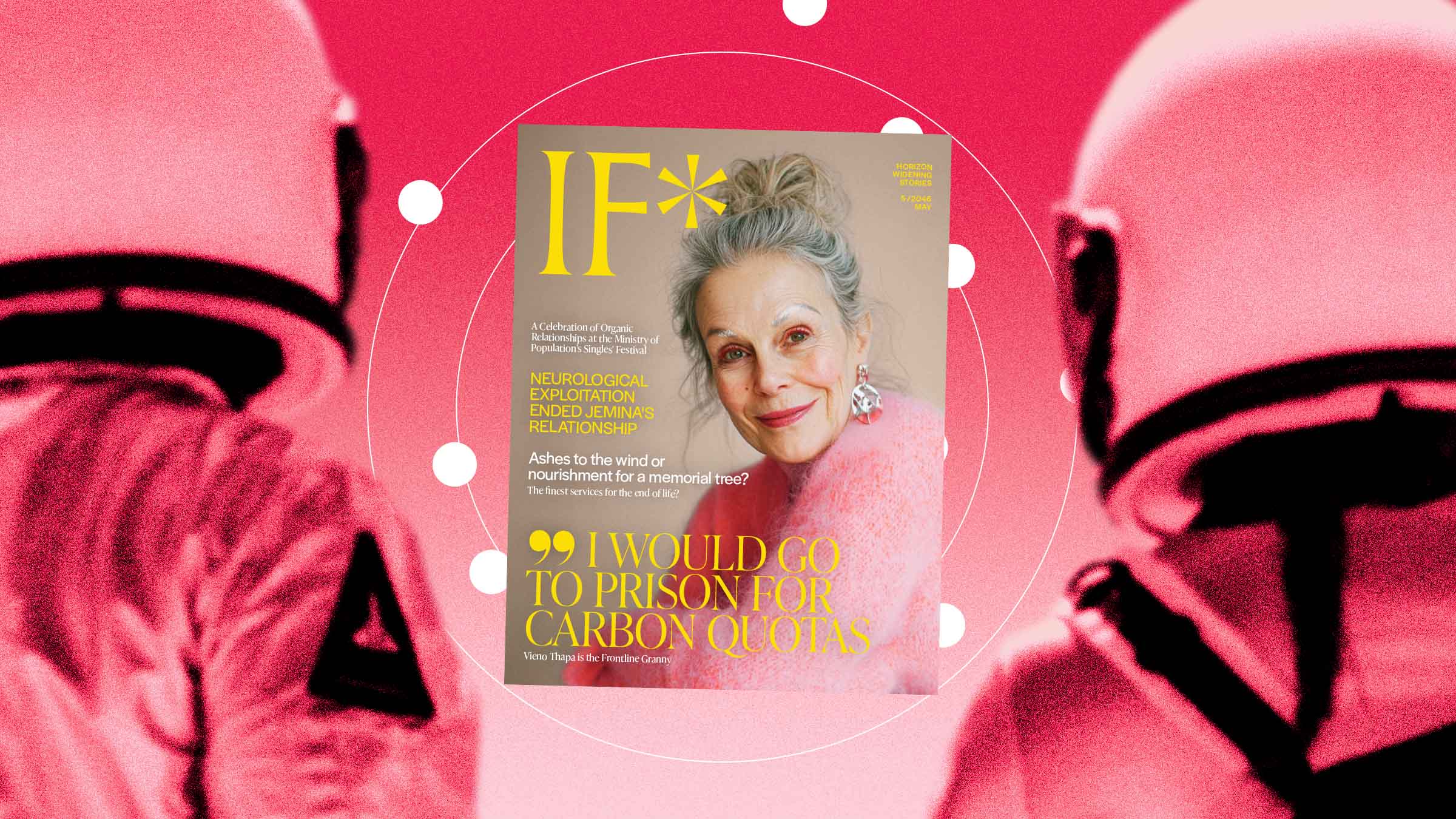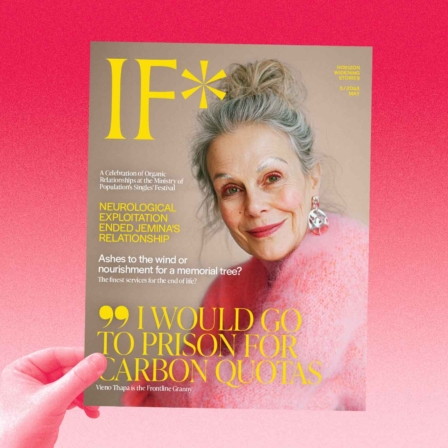Our 2025 Weak Signals review brings together a collection of surprising and thought-provoking real-world phenomena, presented in the form of a magazine set in the year 2046. This speculative magazine, inspired by weak signals, is primarily intended to spark futures thinking and discussion. You can use the magazine, for example, as part of a futures workshop, in teaching, or during an organisation’s development day. In this article, we’ve compiled our best tips for using the magazine. These will be useful when you want to explore it together with others.
Read here
Recognise the future and its significance
The surprising or strange nature of a weak signal always depends on the observer—what is a weak signal to one person may be mainstream to another. That’s why some of the stories in IF may feel familiar and plausible to some readers, while appearing foreign and implausible to others. It can be fruitful to reflect together on what still feels distant and what is already recognisable in the present.
Explore the magazine together as a whole group or in smaller groups. You can either agree on a specific section to dive into or freely select different articles, advertisements, and other content based on your interests. Discuss which elements in your chosen pieces you think reflect a possible future or depict a world that differs from the present. You can mark these parts in the text by underlining or circling them, for example. Also, talk about which aspects feel more plausible than others. After that, you can investigate what kinds of weak signals lie behind the pieces you selected (a signal-by-article list of weak signals can be found in this article).
Next, if you wish, you can discuss what the futures you identified might mean for your team, your organisation, or your entire industry.
Desirable, undesirable
Tensions are often inherent in futures visions, and they may also conflict with one another. A future that is favourable for one person may not be so for another. In times of uncertainty and complex problems, it is essential to challenge outdated visions of the future and to foster pluralistic discussions about what kinds of futures are desirable.
Choose a section of the magazine together that you’d like to explore in more depth. Read the texts in that section and examine the images. Decide whether you want to approach the topic from a personal perspective or reflect on it in terms of your community, organisation, or industry.
Discussion questions:
- What aspects of the topic you selected do you find desirable?
- What kinds of opportunities could this topic open up for you?
- What aspects of the topic do you find undesirable?
- What risks do you identify in relation to this possible future?
Finally, you can reflect on what actions you can take in the present to seize the opportunities you’ve identified or to prevent the risks you’ve outlined.
Notice the emotions
The articles in IF* may evoke a wide range of emotions—and that is one of the publication’s goals. As futurists Stuart Candy and Jake Dunagan (2017) have noted, there is an “experiential gulf” between how we usually talk about the future and how the future actually feels. This means that in addition to thinking about futures, we must also strive to emotionally experience different futures in order to truly internalise them.
The idea behind a magazine set in the future is to offer the reader an experience that touches not only the intellect but also the emotions. This can help better grasp what it is about different alternative futures that truly makes us reflect, feel moved, frightened, or inspired. By exploring our emotional reactions, we can also observe what we consider so important in the present that we would want it to remain in the future—or, conversely, what we believe the future should include that is currently missing.
A group discussion about emotions sparked by IF can, for example, begin with each participant choosing a topic from the magazine that evoked the strongest emotional response. Then, discuss what emotions the topic stirred up and where those emotions might stem from. A good vocabulary for emotions can be found, for instance, here. It’s important to keep in mind that talking about emotions can sometimes feel difficult. That’s why it’s essential to create a safe environment and build trust among participants—for example, by agreeing on ground rules for the discussion. You can use the Timeout Foundation’s ground rules for constructive discussion guidelines for this.
Alternative futures
Weak signals encourage speculation—that is, boldly imagining alternative developments. For each intriguing signal, it’s worth asking: what kinds of alternative futures does this signal open up? What would change if the signal became more widespread? On the pages of IF*, signals bring to life a variety of futures, but each speculation could have taken a different direction, since there are always many possible futures.
Together with your group, you can begin speculating on different alternative futures inspired by the articles in IF*. Choose a story from the magazine that interests your group collectively and explore the weak signals behind it (a signal-by-article list can be found in this article). Reflect on the story and consider: what kinds of different futures could be imagined based on these signals? In what completely different direction could developments have gone? Challenge yourselves to imagine both positive and negative trajectories. You can also use the First Symptoms of Change or Speculate on Futures templates to support this process.
Write your own magazine article about the future
Draw inspiration from the magazine and author your own articles about the future!
First, read through IF* and discuss its different article formats. How are they constructed? How many different signals can you identify in each piece? What kinds of columns exist, and what elements make an article engaging?
Each group member can then choose a weak signal they want to speculate on: what would the future look like if that signal became mainstream? How would this future take shape as a magazine article—what would it include, from whose perspective, and in which section? You can select signals from those listed behind IF articles or use signals you’ve identified yourselves.




Recommended
Have some more.
IF*
Weak Signals 2025: A Magazine from the year 2046
A magazine from 2046: A glimpse into possible futures